Meerkats are small mammals of the Herpestidae family that live mainly in deserts. They are also known as suricates. Although they are closely related to mongooses, they are pretty different, with some unique features.
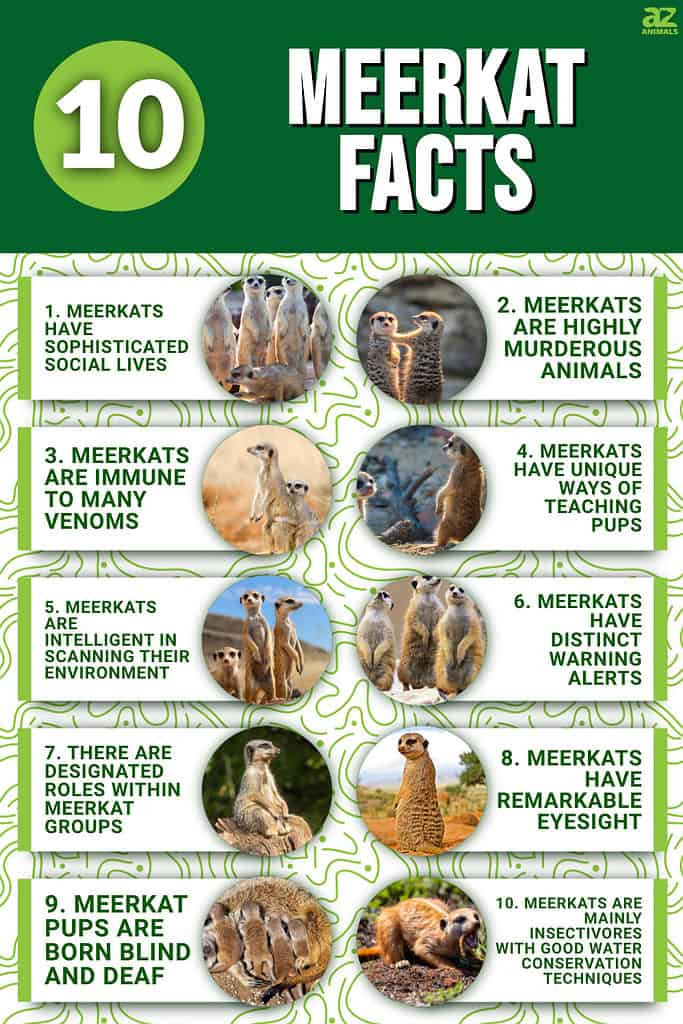
Meerkats have an incredible lifespan due to their lifestyle and intelligence. Have you ever wondered how meerkats could survive for long in the wild despite being small? This post is here to provide interesting answers to that. Here are ten amazing meerkat facts for your reading.
1. Meerkats Have Sophisticated Social Lives

Meerkats are among the few animals in the wild with a sophisticated social lifestyle.
©nattanan726/Shutterstock.com
Meerkats are among the few animals in the wild with a sophisticated social lifestyle. They are small but move in groups to help protect each other. There can be as many as 30 in a group. A group is often referred to as a mob.
A mob sex distribution is usually balanced. The adult meerkats are always in pairs of one male and one female. They also have a meerkat that performs the group’s leading role. Each animal within these groups has designated roles.
2. Meerkats Are Highly Murderous Animals
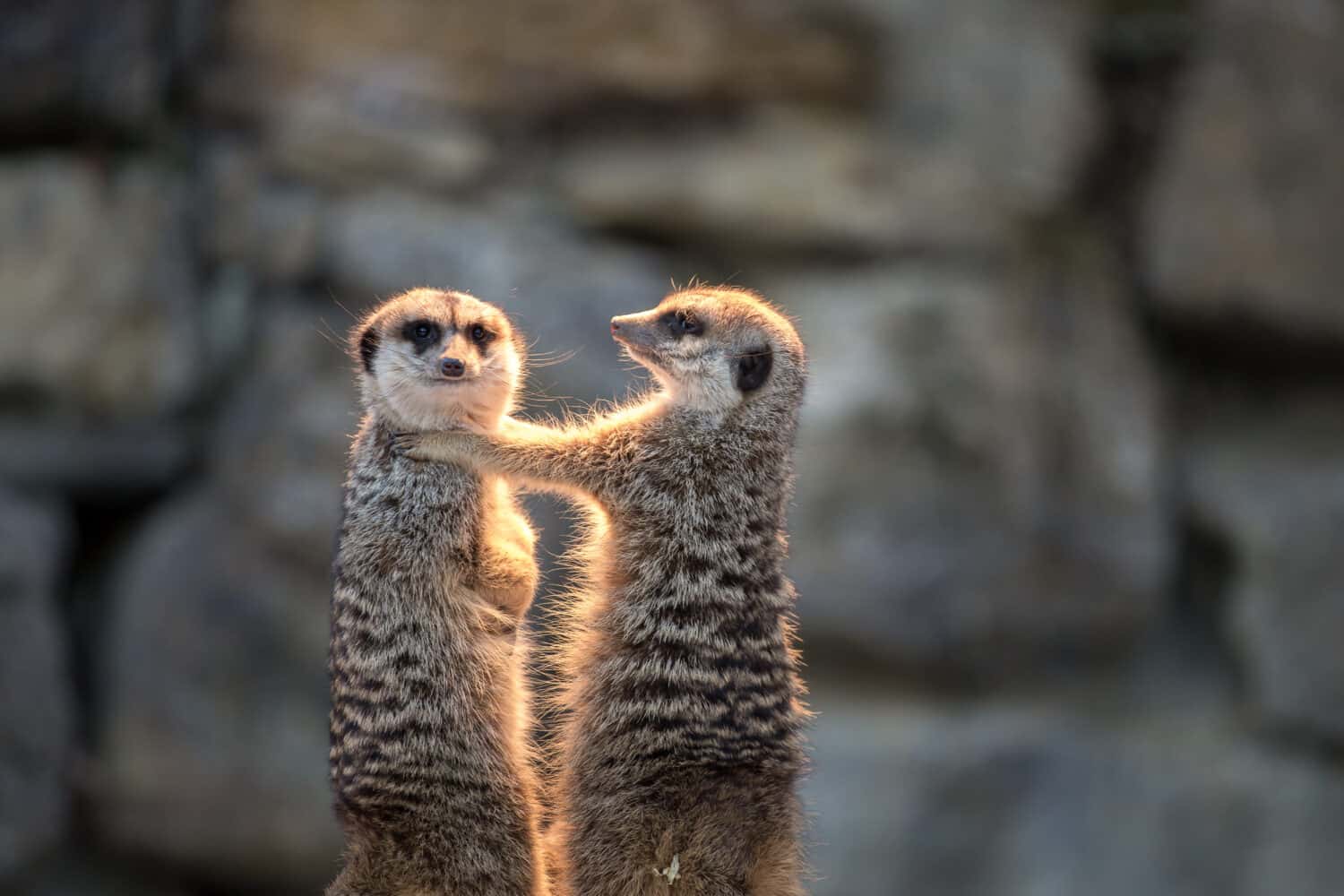
The murder rate among meerkats is around 20%.
Image: sebast90, Shutterstock
©sebast90/Shutterstock.com
Meerkats have an organized lifestyle that ensures their escape from most predators. However, the majority of the deaths within the animal group come from an interesting source. Meerkats are responsible for most deaths within the group.
The murder rate among meerkats is about 20%. That is a large number considering the fact that the average murder among mammals of the same species is about 0.3%. They are very aggressive territorial animals.
3. Meerkats Are Immune To Many Venoms
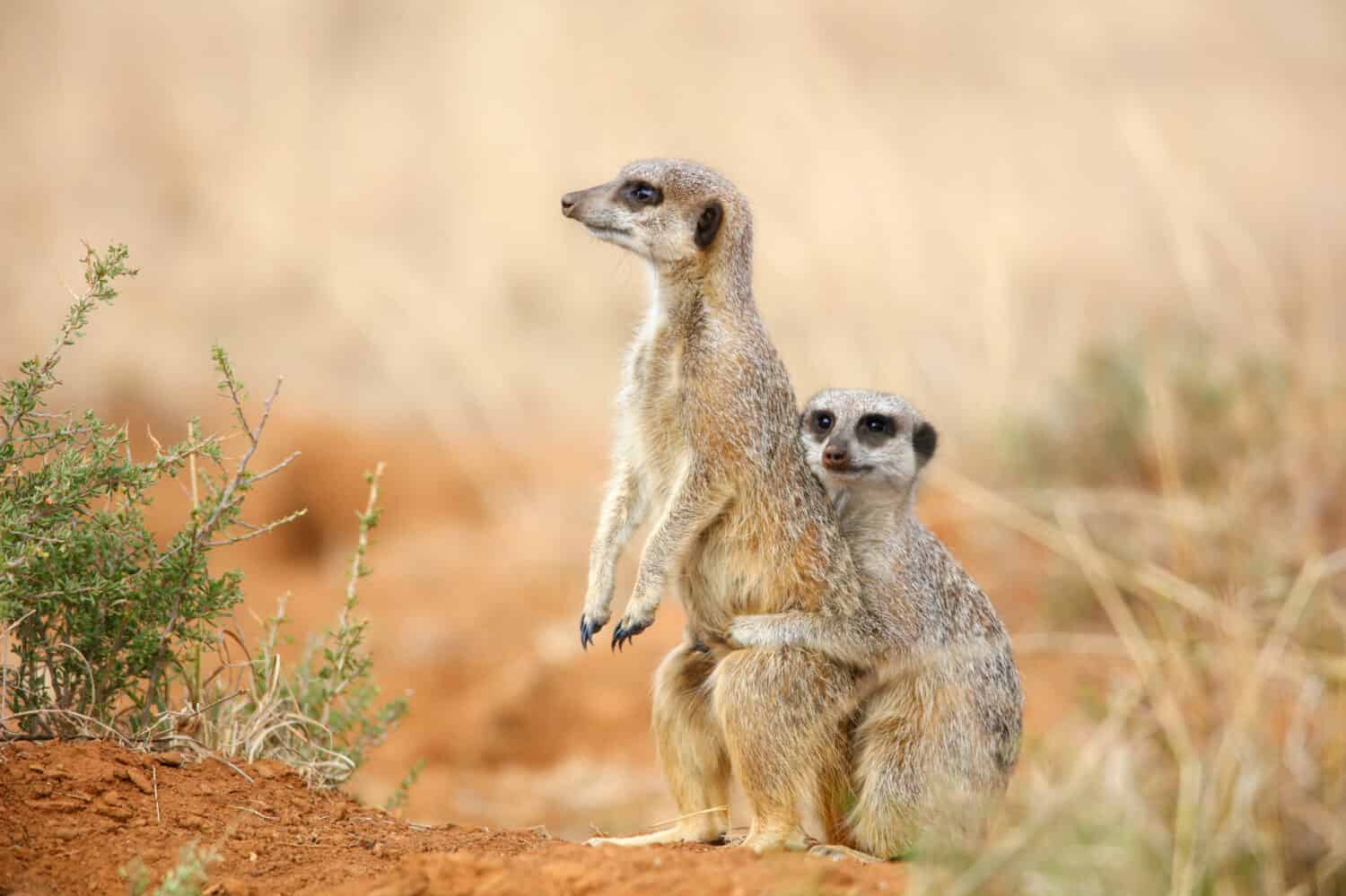
Meerkats have evolved immunity to venoms from scorpions and snakes.
Image: JMx Images, Shutterstock
©JMx Images/Shutterstock.com
Meerkats live in various desert regions around the world. Their survival rate combines different lifestyle practices, but one interesting fact stands out. It is believed that meerkats are immune to venoms from scorpions and predatory snakes.
For most of their lives, they encounter these animals frequently in the wild. They tend to escape or walk away from the scare without as many venomous effects. Their immunity to venom significantly contributes to their long life span in the wild.
4. Meerkats Have Unique Ways Of Teaching Pups
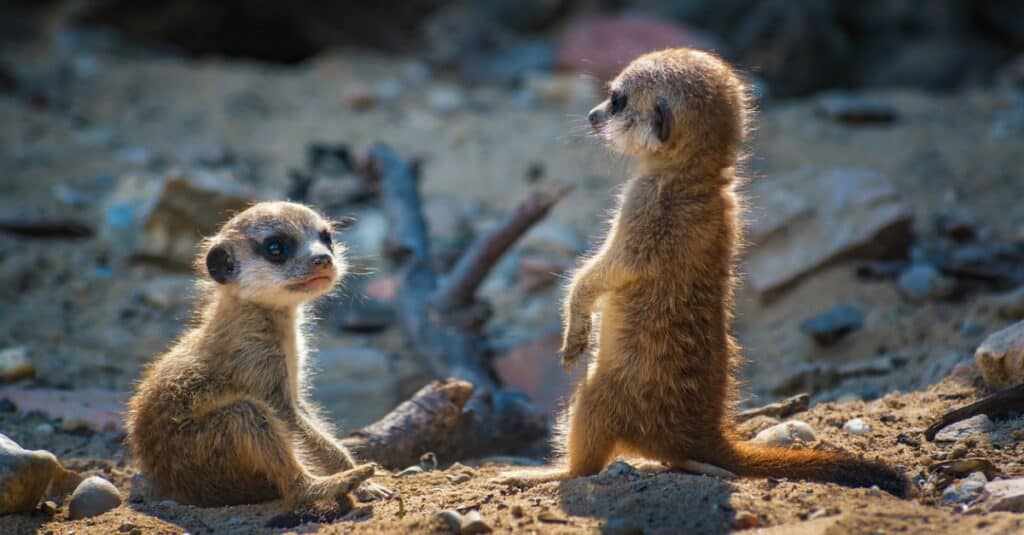
Adult meerkats can train their young ones to become efficient hunters.
©iStock.com/Lubos Kovalik
The intelligence of these small-sized animals is displayed across the various aspects of their lifestyle. This is evident in their hunting pattern; they are very efficient hunters. One interesting point about their lifestyle is how they can train their young ones to become efficient hunters.
At the early stage of the teaching process, adult meerkats bring dead scorpions to their pups. They use these dead scorpions to train the pups. After some practice, adult meerkats catch a live scorpion, bite off its sting, and bring it to the pups. The pups learn to hunt using the live scorpion until they become good hunters.
5. Meerkats Are Intelligent In Scanning Their Environment
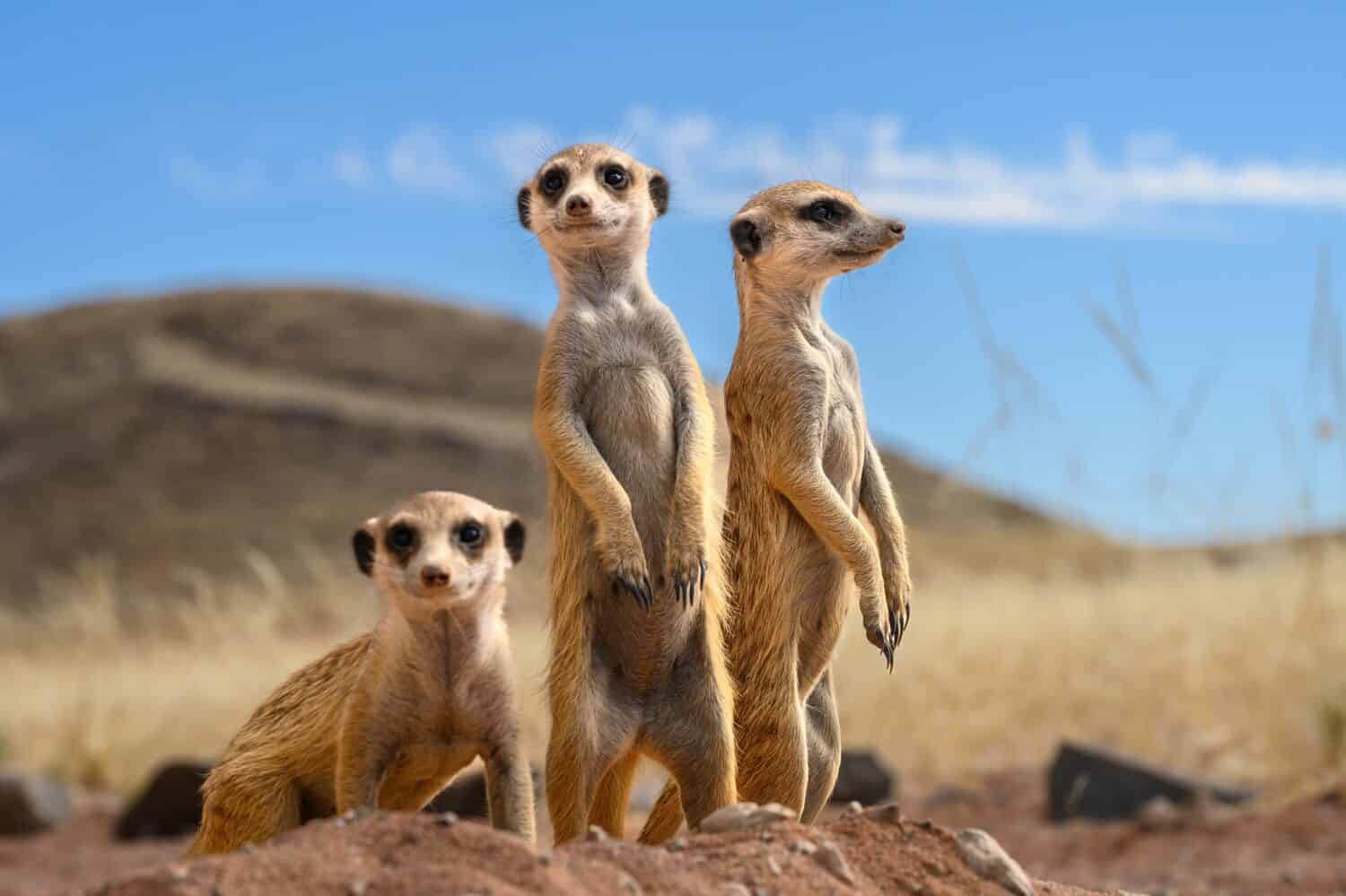
Meerkats stand tall and climb to elevated positions to scan for threats.
Image: Ward Poppe, Shutterstock
©Ward Poppe/Shutterstock.com
Meerkats have a very sophisticated social lifestyle. Different members of the group have specified roles. One such role is that of the sentinel. The sentinel is a designated guard among the group. The job of this animal is to scan the area for potential threats.
It performs its role by standing on its limbs or sometimes climbing over branches and hills. This elevated position is to help get a better and broader view of the environment. This is interesting because meerkats are naturally tiny, but limb standing helps give a clear picture of the surroundings.
6. Meerkats Have Distinct Warning Alerts

The sound of the sentinel meerkats tells the group the type of threat and the necessary action for safety.
©Zsolt Biczo/Shutterstock.com
The sentinel job in the meerkat group is far more exciting and amazing. This guard animal does more than just look out for threats; it also alerts the group. The alert mechanism is where facts get more amazing about meerkats.
There is a distinct sound for every typical threat. The sound of the sentinel meerkats tells the group the type of threat and the necessary action for safety. What is mind-blowing is that meerkats can have as many as 12 different warning sounds.
7. There Are Designated Roles Within Meerkat Groups
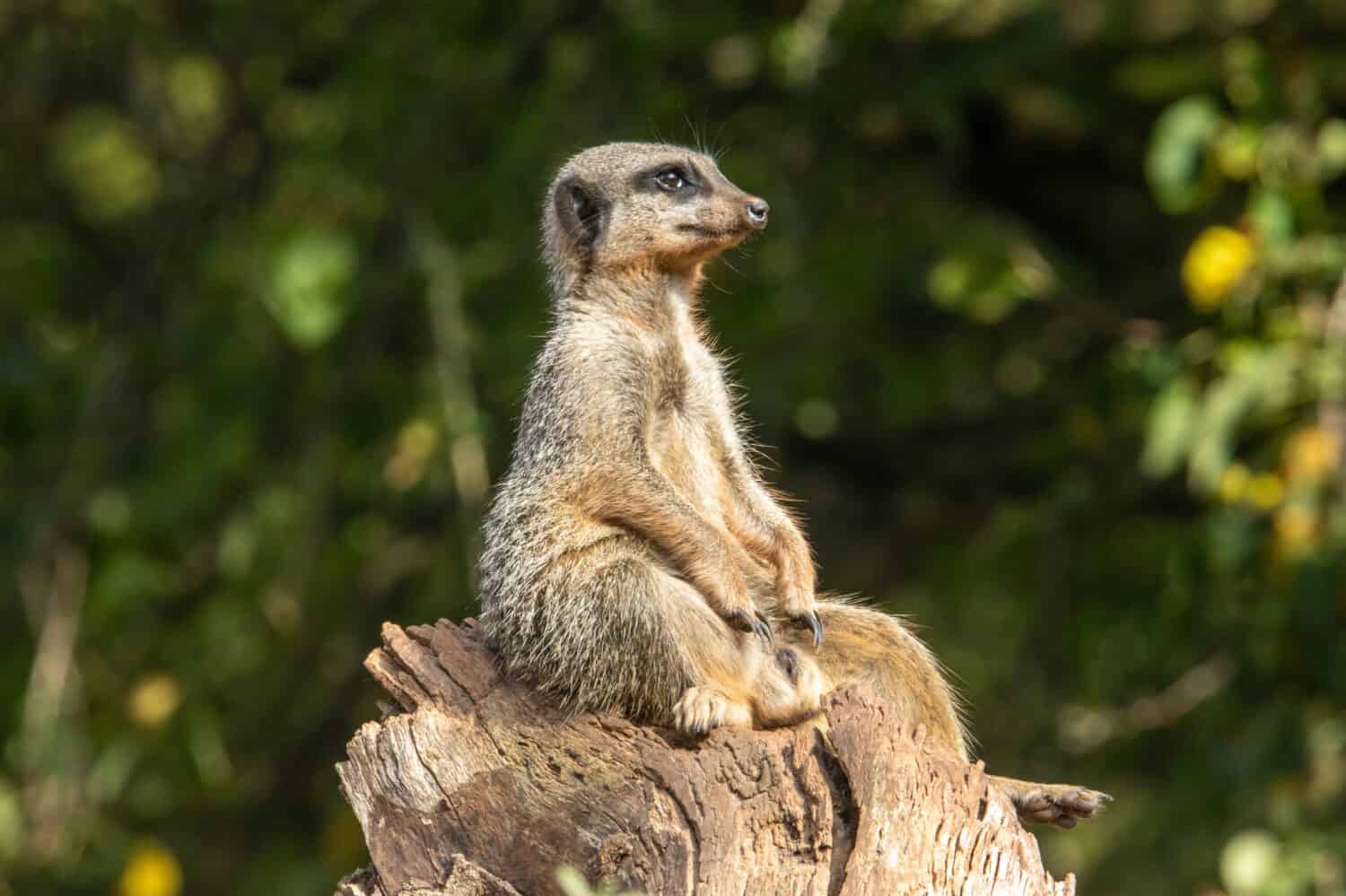
Meerkats have designated jobs within their group – like watching over babies while they play.
Image: Ian Peter Morton, Shutterstock
©Ian Peter Morton/Shutterstock.com
Another fact that stands out about the meerkat’s social life is how every member of each mob performs a role. It is like a community of support. Meerkats spend most of their days hunting; hence the hunters have to go long distances to search for food.
Besides the hunters and the sentinel meerkats that serve as watch soldiers, meerkats also have babysitters. Yes, there is a designated babysitter in the group. The role is to watch over the pups while the adults are out hunting. Meerkats are a working unit of intelligent members.
8. Meerkats Have Remarkable Eyesight
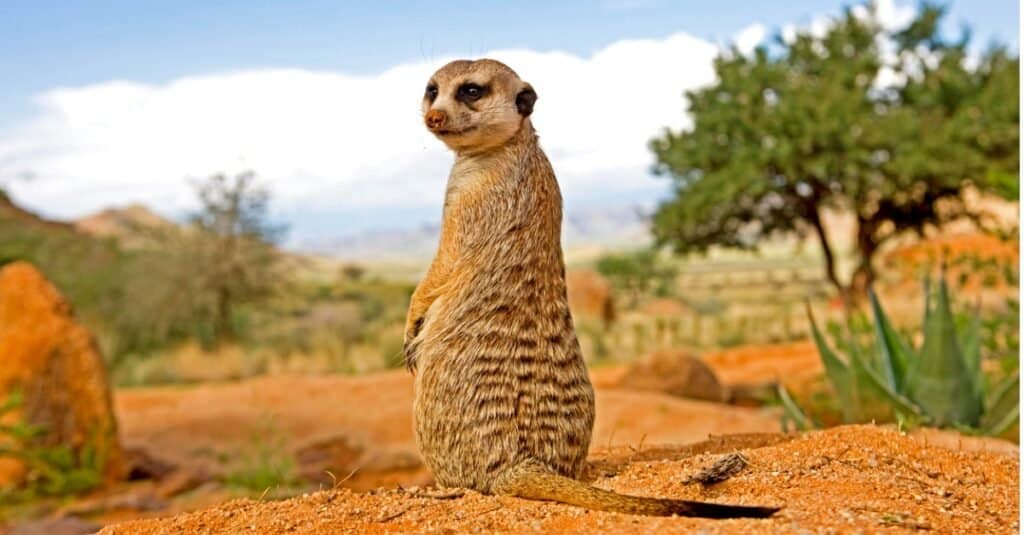
Meerkats can see long distances clearly, which contributes to their outstanding hunting skills.
©iStock.com/slowmotiongli
The meerkats’ survival rate in the wild is not just a function of intelligence; nature has its essential input. These animals have exceptional eyesight that they use in hunting and security. The anatomy of the eyes helps the sentinel meerkat when it is on the lookout.
There is a black patch on the eyes of adult meerkats. This patch helps reduce the intense rays of the sun during the day. With a patch to minimize the effect of the sun, meerkats can see long distances clearly. This incredible eyesight also contributes to their outstanding hunting skills.
9. Meerkat Pups Are Born Blind And Deaf
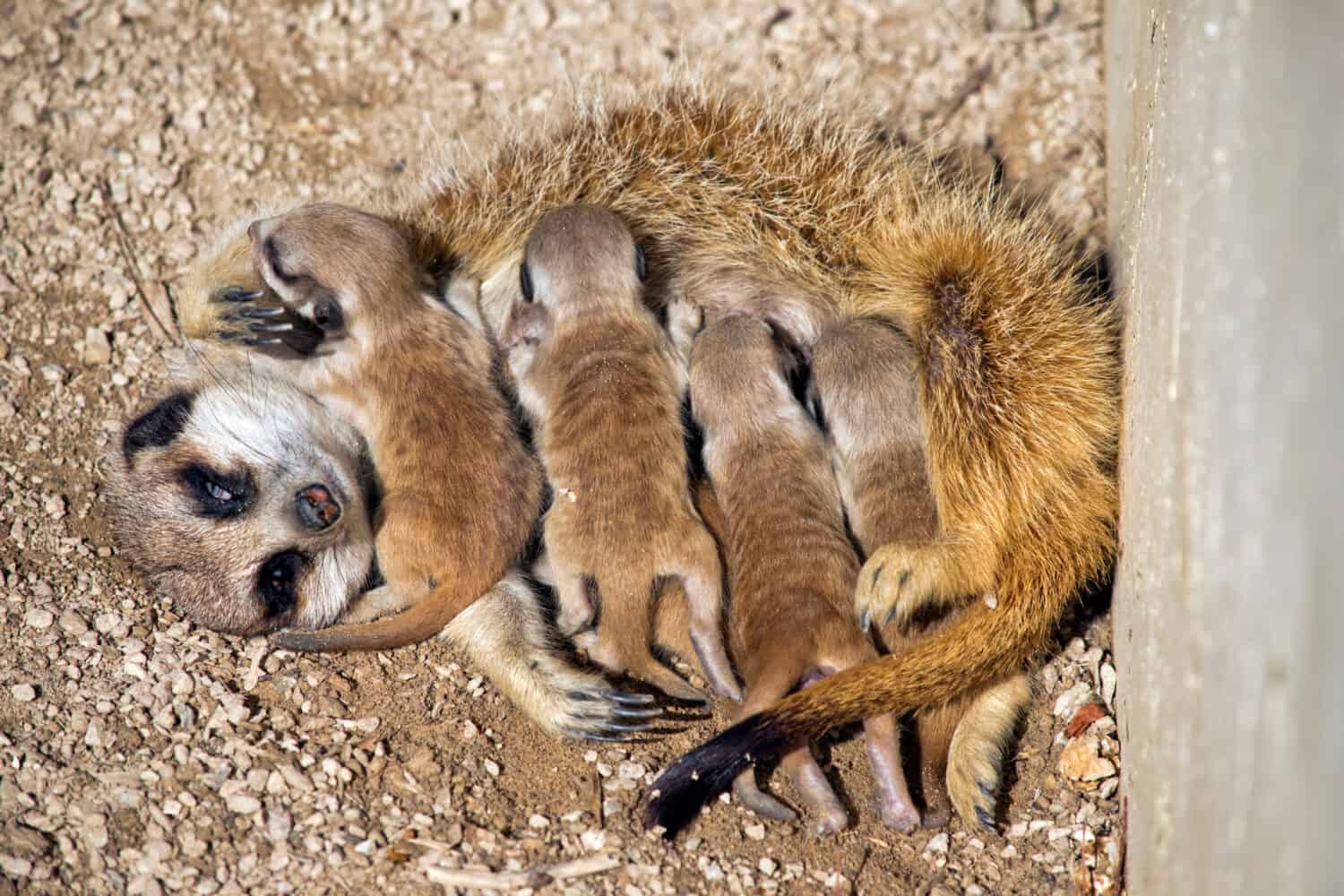
Meerkats are born helpless and depend on their mothers for everything.
Image: Susan Flashman, Shutterstock
©Susan Flashman/Shutterstock.com
Pups, meerkats young ones are born blind and deaf. It is only during their 11 weeks weaning stage that they develop the two senses to a proper degree. This is a remarkable fact when considering the level of development of the two senses.
Adult meerkats depend primarily on these two senses. They use their amazing eyesight to get a good view of threats and their hearing power to distinguish between sounds. Although pups can neither see nor hear, they develop these senses as they grow.
10. Meerkats Are Mainly Insectivores With Good Water Conservation Techniques

Juicy insects and worms provide water for meerkats if none is available.
Image: Alta Oosthuizen, Shutterstock
©Alta Oosthuizen/Shutterstock.com
Meerkats are omnivores, which means they have a wide range of options when it comes to diet. This diet can range from roots and leaves to different types of insects. Meerkats also prey on birds, reptiles, and scorpions. However, they are mainly insectivores, meaning they prefer insects during hunting.
Another unique fact about their eating habit is water conservation. Meerkats can derive water from juicy insects when there is a water shortage in the desert. No water, no problem. There are plenty of juicy insects to feast upon.
The photo featured at the top of this post is © nattanan726/Shutterstock.com
Thank you for reading! Have some feedback for us? Contact the AZ Animals editorial team.






